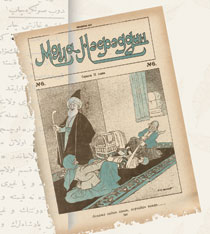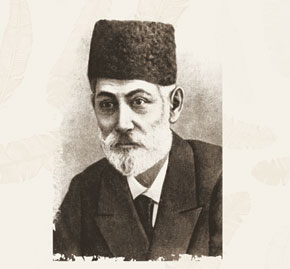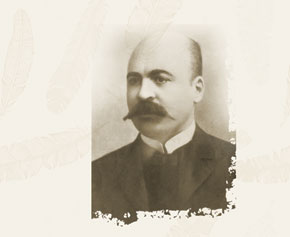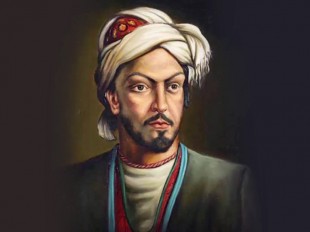On 22 July, the Azerbaijani national press celebrated 140 years. To mark the anniversary, researcher Zafar Karimov outlines a chronology of the early development and foundations of the Azerbaijani press, prior to the formation of the Azerbaijan SSR.
As an information source, the press plays a crucial role in the social, political and cultural development of every nation. The Azerbaijani national press is no exception; intellectuals and writers have worked tirelessly to create the conditions for our newspapers and magazines to be printed, and the press has always remained a focus of the Azerbaijani public’s attention.
ORIGINS
The publishing of newspapers Tatar xeberleri (1831-1833) a weekly supplement of the Tiflis (Tbilisi – Ed.) newspaper Tiflisskiye Vedomosti, and Gafqazin o tayinin axbari (1841-1843) in the early 1830’s laid the foundations for the creation of our national press, which has since developed a rich history. Though no copies of these newspapers remain, some sources confirm that Azerbaijani intellectuals were involved in their publication.
Hasan bey Zardabi, a great naturalist and journalist, began publishing the newspaper Ekinchi on 22 July 1875, thereby founding the Azerbaijani national press. The publication of Ekinchi was a huge step forward not only for Azerbaijanis, but also for the entire Muslim world. Many intellectuals of the time flocked around Ekinchi, such as influential playwrights and writers Mirza Fatali Akhundov and Najaf Vezirov and others who were at the forefront of late nineteenth century Azerbaijani literary development. Together they helped to develop the democratic and educational ideas promoted by the newspaper, which remained relevant up to 20 or 30 years after its closure.
Though Ekinchi was soon closed down, it left a deep mark in the culture of Russian muslims. It was a very successful episode in the history of the national press, concluded renowned academic Aziz Mirahmadov in his study Ekinchi – the first Azerbaijani Newspaper.
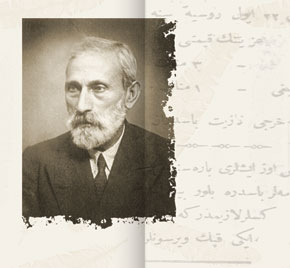 Ali bey Huseynzade (1864-1940), a prominent intellectual who edited the Hayat newspaper,served as chief editor of Kaspi and was involved in the publication of Fuzuyat
Ali bey Huseynzade (1864-1940), a prominent intellectual who edited the Hayat newspaper,served as chief editor of Kaspi and was involved in the publication of FuzuyatZIYA, ZIYAYI-GAFGAZIYYE AND KASHKUL
Several national newspapers published after Ekinchi further helped to develop Azerbaijani national conscience and identity. One of those was the newspaper Ziya, which began to be published in Tiflis under the editorship of Said Unsizade in 1879. It was later renamed Ziyayi-Gafgaziyye.
Articles in Ziya were dedicated to historical, cultural and social issues as well as criticism of religious prejudices. In his Notes About “Ziya,” researcher Agarefi Zeynalov wrote -
Said Unsizade, the editor of Ziya, was a religious man. He had been a religious official for a long time. His education and outlook was based on the Islamic way of thinking and reasoning. But in spite of that, he wasn’t indifferent to events taking place in public life. He tried to help people to progress by spreading news and information. It is worth noting that the progressive-minded journalists and atmosphere of Tiflis, where he lived and worked, had some influence on him.
In January 1883, while Ziya was being published, Jelal Unsizade (Said Unsizade’s younger brother) started publishing the magazine Kashkul in a Tiflis printing office belonging to Ziya. In 1884, Kashkul magazine became a newspaper, whose literary and academic articles followed the writing traditions of the great classicists. Kashkul continued in the footsteps of Ekinchi by opposing conservative literature and urging poets to write about modern life.
It paid particular attention to political questions. For the first time in the history of the Azerbaijani press, the concept of “nation” was illustrated in one of the newspaper’s articles, which used the expression “Azerbaijani nation” in the national press for the first time. The article wrote that an Azerbaijani man didn’t know what to say when a foreigner asked him about his nation.
This satirical article, wrote Agarefli Zeynalov, shows that the question of national identity was raised among the leading Azerbaijani intellectuals in the second half of the nineteenth century.
In a similar vain, academic Isa Habibbayli wrote - I think that the main objective of the article is to strengthen a sense of Azerbaijanism.
The fight for new literature and a national press for Azerbaijani intellectuals influenced the prominent journalist and linguist Mammadtagi Sakhtakhtli (1846-1931). He started publishing a newspaper called Shergi-Rus in Tiflis in 1903, with the help of the satirical writer Jalil Mammadguluzade and the teacher, writer and public figure Omar Faig Nemanzade, who would both soon go on to establish their own satirical paper (Molla Nasreddin). Shergi-Rus wrote about the lives of the Russians, Caucasians and Tatar people as well as Russian-Iranian relations.
POST REVOLUTION DEVELOPMENT
After the 1905-1907 revolution in the Russian Empire, Azerbaijan’s democratic press entered a new stage of development, during a period in the country’s history remembered for the intensification of the class struggle and strengthening of the liberation movement. Like most parts of the Russian empire, Azerbaijan also joined the struggle against tsarism, tyranny, social and national inequality. The strengthening of the Azerbaijani national bourgeoisie in general had a positive impact on the development of the country’s press.
Newspapers like Shergi-Rus (1903-1905), Hayat (1905-1906), Molla Nasreddin (1906-1931), Fuyuzat (1906-1907), Shalale (1913-1914), Igbal (1912-1915), Dirilik (1914-1916), Achiq Soz (1915-1918), as well as magazines, widely reflected social and political events in the country, and aired the thoughts and views of intellectuals. These newspapers can be divided into two groups: the serious and the satiric. Yusif Vazir Chemenzeminli (1887-1943), a prominent writer and statesman of the time, referred to the first group as “the constructive press” and the second one as “the destructive press” and attached particular importance to unifying these groups on national issues.
Molla Nasreddin, Babayi-Amir and Lek-lek were the satirical magazines. They mostly dealt with educational issues and criticised those who treated women as slaves. The academic and political newspaper Hayat, which was published daily from June 1905 until autumn 1906 in Baku, financed by oil baron Zeynalabdin Tagiyev, won great respect for its nationalist spirit.
Hayat reflected the ideas of intellectuals such as Ali bey Huseynzade (1864-1940; writer, philosopher, doctor, who designed the national flag of Azerbaijan - Ed.) and the paper’s editor Ahmed bey Agaoglu (1869-1939; publicist, journalist, politician, a founder of pan-Turkism -Ed.). Itpromoted the ideology of Turkism but didn’t separate it from Islam. In early 1906, the newspaper’scirculation rose to 4000 copies, quite a high figure for the time.
ISSUES OF LANGUAGE
One of the major questions raised in Hayat concerned language. Huseynzade wrote in the 14 June 1905 issue:
Do we need to simplify the language in our newspaper or do our people need to learn Turkish [Azerbaijani – Ed.], their native language? That is the question! We believe we can’t write any simpler. The language is the same, but sometimes we write and read in different ways because we are from different regions of Azerbaijan. But we must use our common language here in Baku.
One of the press outlets concerned with developing the Azerbaijani language was the magazine Molla Nasreddin. According to its founder Jalil Mammadguluzade (1866-1932), a journalist and satirical writer strongly in favour of developing an Azerbaijani literary language:
We weren’t ashamed to write in our native language, and Molla Nasreddin, he explained, became an example for those who write simply and naturally.
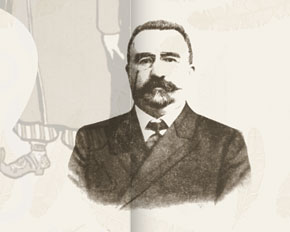 Alimardin bey Topchubashov, a prominent statesman and founding figure of the Azerbaijan Democratic Republic (1918-1920)
Alimardin bey Topchubashov, a prominent statesman and founding figure of the Azerbaijan Democratic Republic (1918-1920) AND POLITICS
The newspaper Achiq Soz (1915-1918), first published on 2 October 1915, laid the foundations for a new stage in the history of Azerbaijani political thought. In the first issue of this daily newspaper published in Baku was the slogan: Be Turk! Be Muslim! Be Modern!
The editors of Achiq soz - a social, political and literary newspaper - were Mammad Amin Rasulzade, a leading force in the foundation of the Azerbaijan Democratic Republic (1918-1920), and Mammadeli Abdulazizzade, as well as Uzeyir Hajibeyli (Azerbaijani composer, publicist and public figure, who composed the music for the national anthem of the Azerbaijan Democratic Republic – Ed.) and Oruj Orujov (one of the Orujov brothers that owned the Orujov Brothers Printing House – Ed.) at different times.
Achiq soz promoted unity, Turkism and nationalism, mainly through Rasulzade’s articles. He wrote, in relation to the Muslim MPs parliamentary group in the state duma – What do Muslims want? They want not to be humiliated because of their religion. They don’t want to have to endure bureaucracy just because they are Muslims. Their language and religion should be free from any kind of pressure. Do their beliefs prevent them from being patriotic?
Issues relating to the formation of an Azerbaijani political culture and cultural autonomy hadn’t been addressed in the national press for a long time. Rasulzade and Alimardan bey Topchubashov (who served as Minister of Foreign Affairs and Speaker of Parliament of the Azerbaijan Democratic Republic in 1918 – Ed.) put forward the idea of providing the South Caucasus nations with territorial autonomy at the All-Russian Congress of Muslims held in Moscow from 1 to 11 May 1917. Speaking at the congress, Rasulzade, who was the main speaker from the territorial autonomy block, said –
Russia must be ruled as a democratic republic. I think Russia should consist of national autonomies.
Topchubashov, commenting on this question more widely, said: Above all, we want to live in a democratic republic (a federal republic). In a democratic republic all the power is in the people’s hands. These governments are also known as “people’s governments.”
All the issues discussed at the congress were widely reflected in the Azerbaijani democratic press. At the beginning of the twentieth century, Azerbaijani society was well informed about the principles of international human rights and freedoms, public administration and other questions thanks to the consistent and purposeful activity of the Azerbaijani national press.
CULTURE, SCIENCE AND EDUCATION
The role of the press in the development of culture, science, education and political thought in Azerbaijan at the beginning of the twentieth century was unprecedented. A number of social, political and intellectual figures of that period regularly published interesting articles on the importance of education and training a national workforce.
Writing for Achiq Soz, Rasulzade reflected his support for the Azerbaijani struggle against reactionary policy and his opposition to Russia’s approach of dividing the Turkish speaking nations within the Russian Empire and the general Russian education policy in the Caucasus, which disregarded the national and cultural rights of the Caucasian Turks and subjected them to discrimination.
Later, on 28 June 1919, Mammadtagi Sakhtakhtli, editor of Shergi-Rus, wrote an article entitled University in Azerbaijan about the problems of education, native language and the importance of university training.
DEMOCRATISATION AND STATEHOOD
Though an autocratic regime held sway in Azerbaijan at the beginning of the twentieth century, the process of democratisation in Azerbaijani political life was expanding. Political organisations and social groups formed by Azerbaijanis or other nations represented their own interests and began to change their ways of thinking.
Azerbaijani intellectuals, taking advantage of the weakening imperial censorship and state control, began to establish various educational and cultural societies, such as Neshri-Maarif Cemiyyeti (the Publication-Enlightenment Society), Nicat-Maarif Cemiyyeti (the Salvation-Enlightenment Society), Sefa Cemiyyeti (Joy Society), Seadat Cemiyyeti (Happiness Society) and Musulman Cemiyyeti Kheyriyessi (The Muslim Charitable Society).
The press played a central role in this, as well as in the creation of political parties and public organisations in Azerbaijan at the beginning of the twentieth century. The press announced the purposes of these various new parties and organisations and tried to strengthen social support for these institutions in the struggle against anti-Azerbaijani policy. Over 60 periodicals were published in Azerbaijan in those years and the number of books in the Azerbaijani language also increased.
The Bolshevik-oriented press received the recognition of Azerbaijani independence with jealousy, perceiving it to be a continuation of imperial Russia’s occupation policy.
Celebrated composer and publicist Uzeyir Hajibeyli, who fought tirelessly in the press to preserve the language, culture, art, national and spiritual values of the Azerbaijani people wrote the following about the parties acting against Azerbaijani independence:
A man (or a party) who (which) acts against the independence of a country and wants to subordinate it to another is our enemy. He (It) is the enemy of humanity even if he (it) pretends to be socialist.
The newspaper Azerbaijan, published in both Azerbaijani and Russian, of which Hajibeyli was chief editor from 1919 to 1920, wholeheartedly promoted the idea of national statehood and independence. On 8 May 1919, the Azerbaijan newspaper warned that,
Many elements that do not want Azerbaijan’s development have now come together in Baku. These people, driven from Georgia, want to preserve imperial Russian domination in Azerbaijan. Azerbaijan’s Muslim population understands the danger clearly and supports the parliament.
The newspaper Azerbaijan also published details of the bloody massacres committed by Armenian Dashnak forces under the Bolshevik flag in Baku, Shamakhi, Goychay, Quba and other settlements in March 1918.
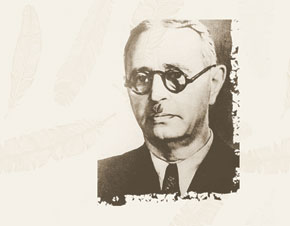 Uzeyir Hajibeyli (1885-1948), the legendary Azerbaijani composer, who also edited the newspapers Achig Soz and Azerbaijan
Uzeyir Hajibeyli (1885-1948), the legendary Azerbaijani composer, who also edited the newspapers Achig Soz and Azerbaijan THE AZERBAIJAN DEMOCRATIC REPUBLIC AND BEYOND
The Azerbaijani national press gained almost complete freedom after the establishment of the Azerbaijan Democratic Republic and became more efficient following its adoption of new laws. Kaspi, İstiqlal, Hurriyyat, Ovragi-nafisa, Azerbaijan and other press organs published a wide range of articles on politics, science, education, culture, health, the military etc., and carried forth the thoughts and ideas of famous intellectuals. The press clarified the new laws adopted by the newly formed parliament and published articles and statements in the newspaper Azerbaijan, the official state press outlet, by the first Prime Minister of the Azerbaijan Democratic Republic Fatali Khan Khoyski and other government officials.
Although following the dissolution of the Azerbaijan Democratic Republic the Azerbaijani national press was compelled to serve the Soviet regime for 71 years, it managed to preserve the traditions established by the early newspapers and magazines thanks to the efforts of Soviet-era Azerbaijani intellectuals and writers.
After Azerbaijan gained its independence again in 1991, a large number of new press outlets began operating to try to foster a sense of independence in Azerbaijanis, which had been suppressed under the Soviet regime. A Special Fund was established to support the independent press and many newspapers are now given material assistance from the State. Today, the population is provided with high-speed internet and quality communication services and on 22 July the national press celebrated 140 years. All of this owes much to the early efforts of Azerbaijan’s media pioneers.
About the author: Zafar Karimov is a researcher at the Institute of History of the Azerbaijan National Academy of Sciences, Doctor of Philosophy, and the author of works on the history of the Azerbaijani press.
